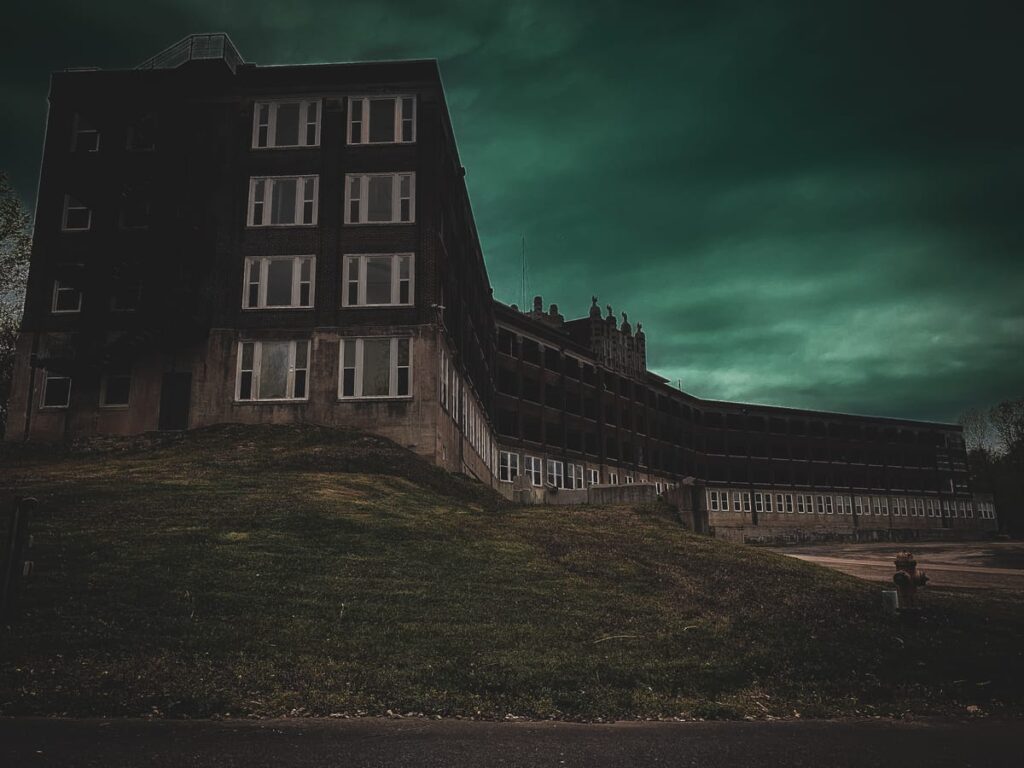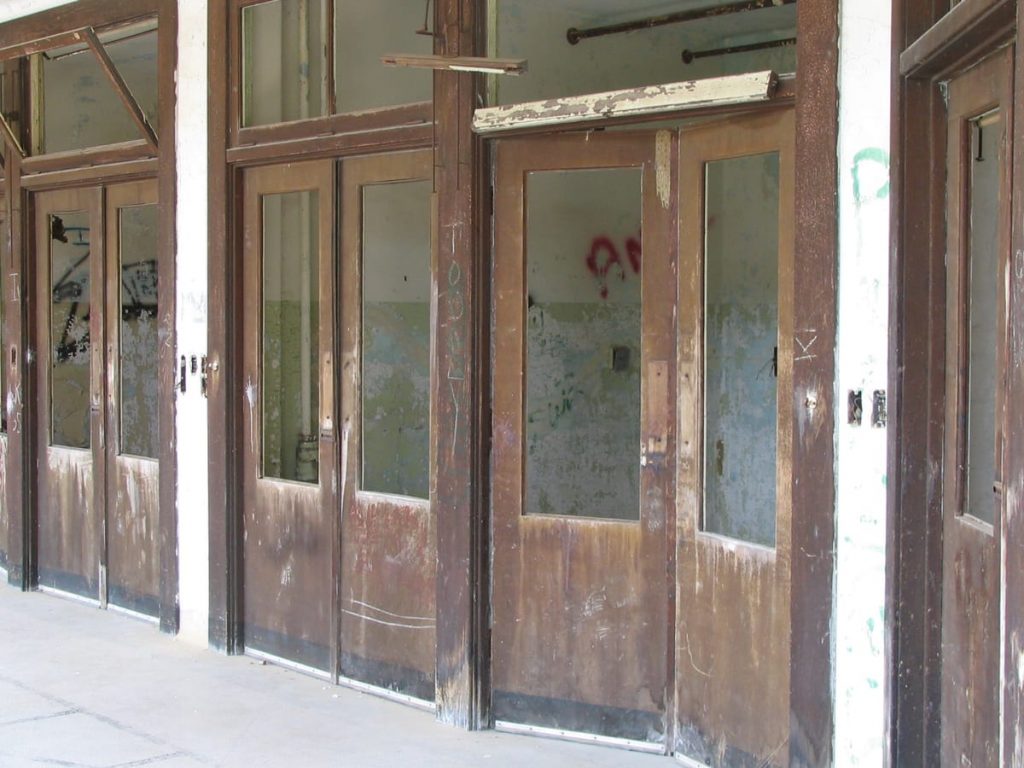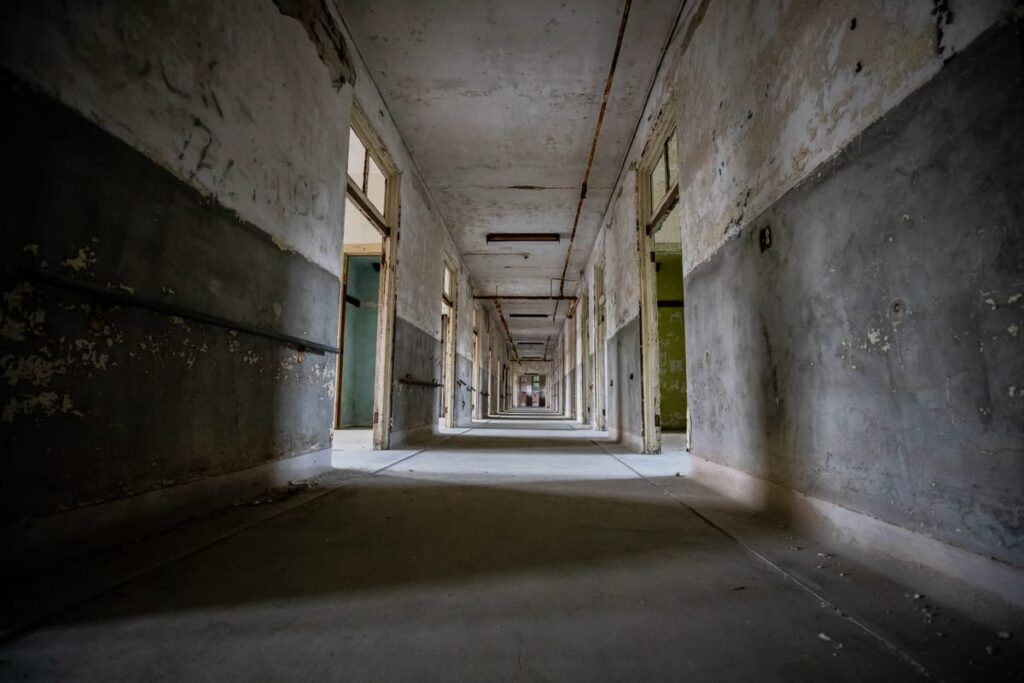
Waverly Hills Sanatorium
This former tuberculosis sanatorium is positively infected with paranormal activity
Paranormal Claims at Waverly Hills Sanatorium
- A former nurse who reportedly committed suicide on-site is known to appear in the room where she died
- The spirit of a child, named Timmy, is often said to play with visitors and roll balls around rooms
- Cold spots are often encountered
- The 'body chute' is said to be a hotspot of activity including apparitions and disembodied voices
- Apparitions are reported throughout the entire building
- Some visitors have been pushed by unknown forces
- People say they are often touched or brushed by in certain hallways and in the body chute
Waverly Hills Sanatorium’s History
Imagine a respiratory illness so damaging that contracting it could change, or end, a person’s life. Now imagine that respiratory illness is so contagious that it has been a worldwide pandemic for years, and humanity remains ill-equipped to fight it.This scenario was the reality for generations of people co-existing with tuberculosis. In that time, the way to manage the disease was to quarantine patients in sanatoriums.
While many of these sanatoriums have been torn down, a few remain frozen in time from the last time they treated a patient. One of these time-frozen hospitals is Waverly Hills Sanatorium.

With a thin layer of trees separating it from modern Louisville, Kentucky, traveling up the winding path to the brick-clad batwings of Waverly Hills feels like stepping directly into the past. In fact, it has gained a reputation as a place where history comes to life through disembodied voices, moving objects, and apparitions.
Beyond just being an example of old-world medicine, Waverly Hills is said to be a place where the specters of death never truly die.
Tuberculosis Sweeps the Midwest
For people living in the 19th and early 20th centuries, tuberculosis was both an incredibly contagious infection, and a difficult one to diagnose early. This proved a recipe for long-term disaster as people with active tuberculosis infections could spread the virus for weeks or months before being diagnosed. The problems this caused worsened as urbanization took hold of the Midwestern United States.



For Louisville, Kentucky, and the entire Jefferson County region, the problem of tuberculosis reached a peak in the first years of the 20th century. As the population of Jefferson County exploded to nearly 263,000 by 1910, infrastructure and sanitation struggled to keep up.
In crowded and unsanitary conditions, tuberculosis soon became an issue of plague proportions, being labeled the ‘White Plague’ by local press as cases and deaths mounted.
With a specialty care hospital badly needed, city authorities purchased a plot of land dubbed Waverley Hill by its then owner Thomas Hayes. Hayes founded a school there named after Sir Walter Scott’s series of Waverley novels, naming the whole plot of land similarly. The city opted not to change the name when they procured the land for their tuberculosis hospital, though the second ‘e’ was later removed.
Timeline of Waverly Hills Sanatorium's History
Swipe or use timeline points to see Waverly Hills Sanatorium through the years

1910
The first sanatorium on Waverley Hill was small, only capable of housing 40 patients. Each year, new buildings were built, raising the capacity to 130 by 1914. While this sanitarium served well enough through World War I, by the time the roaring 20s arrived, a new structure was needed.
Plans were drawn up by architects James Gaffney and Dennis X. Murphy for a single brick building to house 400 patients. Construction began in 1924, and the new facility was opened as Waverly Hills Sanatorium on October 17, 1926.

1926
The new Waverly Hills Sanatorium was almost fully self-sustaining, keeping an on-site power plant, a butcher shop, and sprawling farm fields. Over the next twenty years, thousands of patients were treated at Waverly Hills.
Some left through the front doors, while others left through the ‘body chute,’ a long tunnel built to take employees to and from the hospital that was also used to bus corpses to waiting hearses. While it isn’t known how many people died at Waverly Hills in this time, estimates span from 6,000 to 50,000.

1943
Streptomycin, an antibiotic isolated in 1943, was found to possibly treat infectious diseases like tuberculosis. Lab testing quickly convinced the US government to experiment with it, despite its toxicity. The government ran experiments at the Percy Jones Army Hospital on three injured soldiers suffering from seemingly lethal infections.
The first soldier died, and the second recovered with permanent blindness as a side effect of the streptomycin. But the third overcame infection after administration of streptomycin, without major side effects.

1944
This success led the government to back a clinical trial, which went on to prove efficacy of streptomycin for treating tuberculosis just one year later .
And the third solider, Robert Dole, went on to live a full life, eventually becoming well known as US Senate Majority Leader and as a presidential candidate.

1952
While patients at Waverly Hills were anxious for cures, the rollout of streptomycin was years away. But, advances in tuberculosis treatment did change how Waverly Hills managed their patients, with many more now surviving their infections. Gone were the days of wheeling corpses out the body chute.
As the 1950s dawned, streptomycin became a widely available treatment for tuberculosis and that coupled with isoniazid, a drug developed in 1952, turned tuberculosis into a manageable infection.

1961
Waverly Hills Sanatorium closed its doors in 1961. However, it was soon reopened as a nursing home, Woodhaven Geriatric Center. Unfortunately, Woodhaven frequently ran into issues relating to overcrowding and understaffing, and soon developed a negative reputation that followed it for the remainder of its operational life.
Reports of abuse and neglect were common, and only got more common as time went on. The facility was finally closed by the state of Kentucky in 1982, citing these numerous deficiencies in care.

2001
After the nursing home was closed, the building sat dormant and went through a long list of owners who had different ideas for the property. Some wanted the building turned into a prison, others hoped to tear it down and build a statue of Jesus, but none of these plans materialized.
Finally, the facility was sold in 2001 to its current owners, who began opening it up for tours and leaning into the building’s reputation as a local ‘haunted house.’ The success of this move, however, was likely not anticipated by anyone.
Is Waverly Hills Sanatorium Haunted?
Waverly Hills Sanatorium gained a reputation as a haunted curiosity not long after the nursing home closed. Waverly Hills was a frequent visit for trespassers looking for a thrill and a chance to experience the ghostly happenings at the site for themselves.

While the 2001 buyers did well to combat trespassers, they opted not to brush aside the ghost stories and legends, but rather highlight them as just another aspect of the building’s unique and storied past, and hopefully drum up interest in legitimate tours of the space. And with the stories coming from the building, it certainly wasn’t a bad idea.

Phantom Children of Waverly Hills Sanatorium
Apparitions are seen throughout the building and many investigators who have visited have left with strange photos and videos they claim are captures of these supposed apparitions. While some are reported to just be shadow figures, others are described in high levels of detail, including a commonly reported apparition of a little girl in a blue dress.
One detailed apparition is named ‘Timmy,’ who is the spirit of a young boy who is sometimes spotted as an apparition carrying a leather ball with him. But though he isn’t spotted too often, Timmy is notorious for playing games with visitors, often rolling balls back and forth for fun.

Waverly Hills Sanatorium’s Spooky Sights and Sounds
Along with the vivid apparitions seen within, many shadow figures are also spotted from outside Waverly Hills Sanatorium. Some are seen lingering on the roof, or slowly strolling up there. Others are caught peeking out of the large, open windows at visitors.
Going with these countless apparitions, disembodied voices are a fixture of the Waverly Hills experience. Countless visitors have heard these mysterious, ghostly voices, and many people have taken recordings inside the building hoping to capture them.
The Waverly Hills Death Tunnel
In an attempt to maintain morale and hide the amount of death surrounding the patients of Waverly Hills, a remote access point was added to building where bodies could be gathered for cremation. This 525 foot long cold, cement tunnel descends deep into the earth before ending at a door in the side of a hill behind the facility. The number of bodies that traveled this passage is debated, but the residual presence of their owners is undeniable.

Investigators visiting Waverly Hills have reported deep uneasiness while staring into the abyssal tunnel and being overcome with feelings of both grief and panic while inside. Visitors who have braved the remaining 425 feet of traversable tunnel have reported the sound of voices in the dark, and, most frighteningly of all, a shadowy apparition that seemed to follow them. Luckily, this entity is known to keep its distance, but more than a few investigators have felt the need to exit the body chute at a run.

An Infamous Past, a Promising Future
Through stories and legends, Waverly Hills has gained a new lease on life, becoming one of the most in-demand tourist destinations in Louisville and one of the most famous haunted locations in the United States, if not the entire world.
Its ghost tours book out months in advance and paranormal investigations now occur almost weekly, with thousands of investigators visiting annually and coming away with new photos, EVPs, and stories to share.



Since the early 2000s, the building has been featured on numerous paranormal television programs including Syfy’s Ghost Hunters, Travel Channel’s Ghost Adventures, VH1’s Celebrity Paranormal Project, Destination America’s Ghost Asylum and Paranormal Lockdown, the Buzzfeed Unsolved web series, among others. It has also been a filming location for movie productions, including the 2005 horror film Death Tunnel, which had a majority of its filming done at Waverly Hills.





